The Baby Tears plant with its frothy growth makes a cute indoor plant or outdoor ornamental.
Baby tears have small leaves that grow in clusters of long strings. This creates a densely textured and interesting plant that is at home in fairy gardens, terrariums or plant pots of all sorts.
Baby Tears Plants come in many varieties and colors. You will find them in both the Pileas and soleiroliis genus. Also known as Irish Moss or angels tears.
The leaves can be very small as in tiny tears, or somewhat larger like the pilea glauca. They come in several colors and textures.
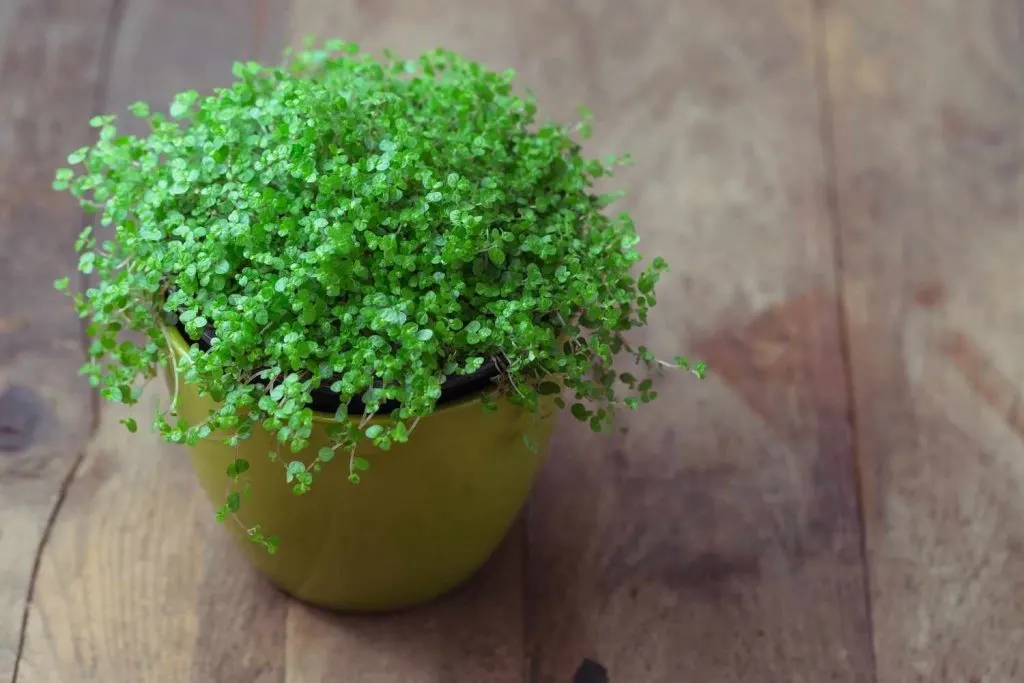
Whichever baby tears variety you choose they are all very similar in their care needs.
More Fun Plants:
We have so many interesting plants to explore. Check these out!
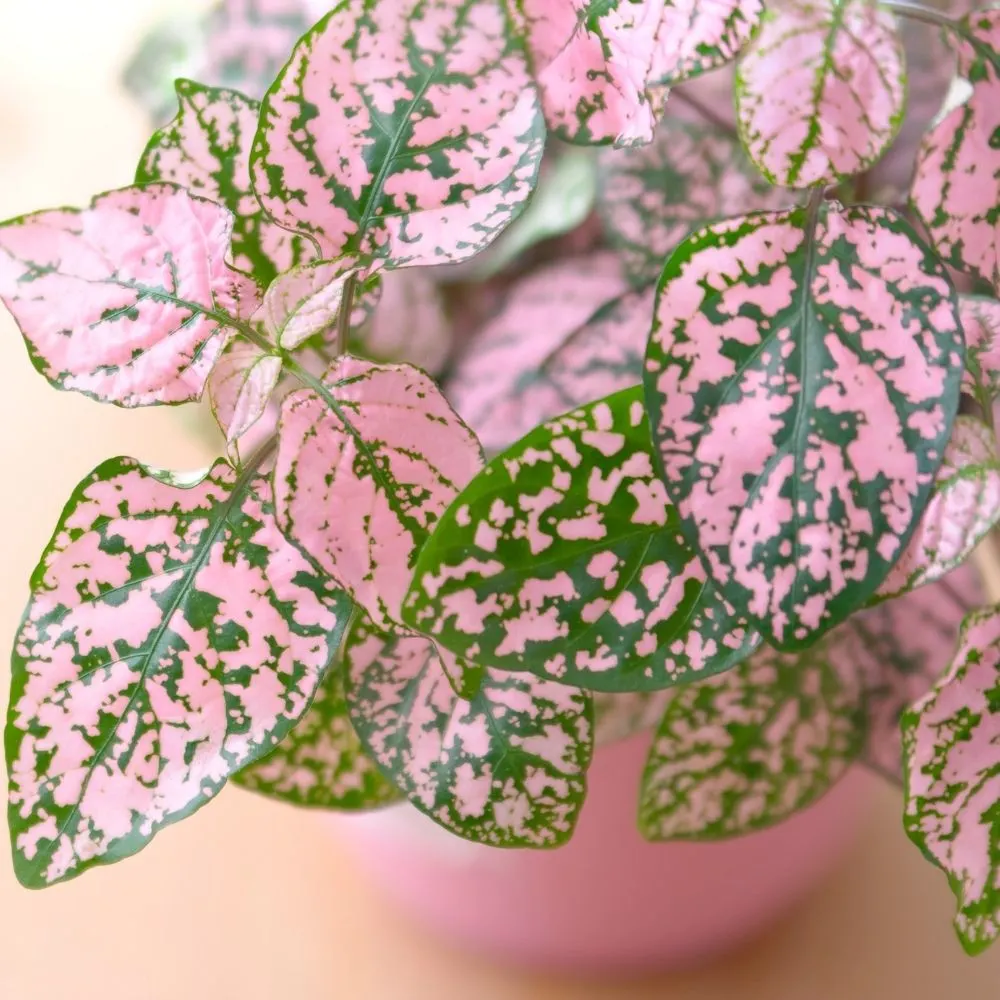
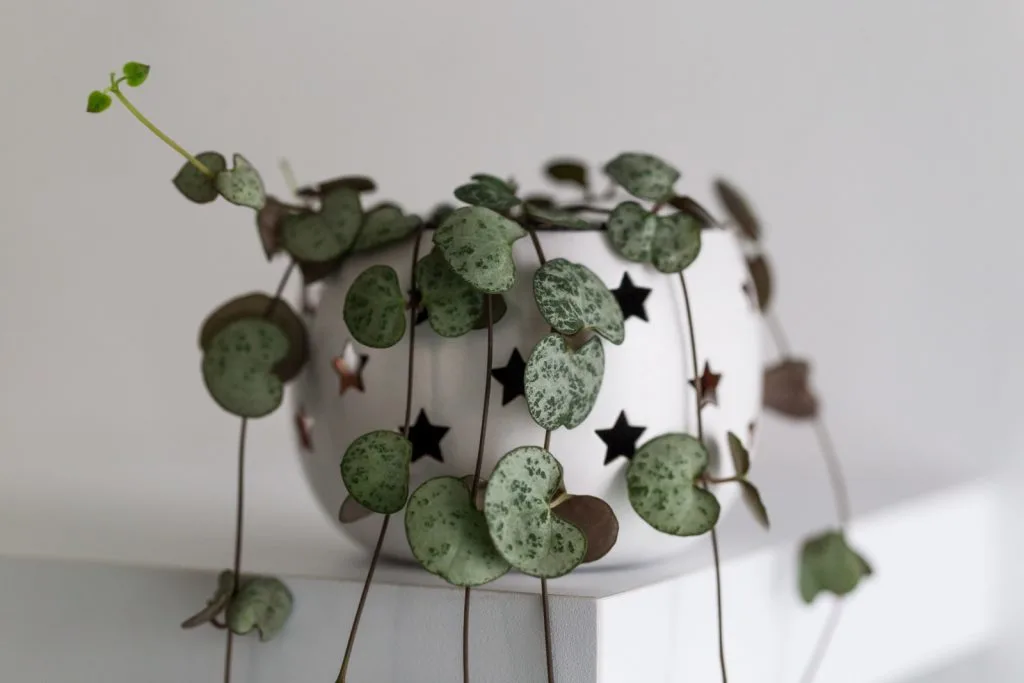
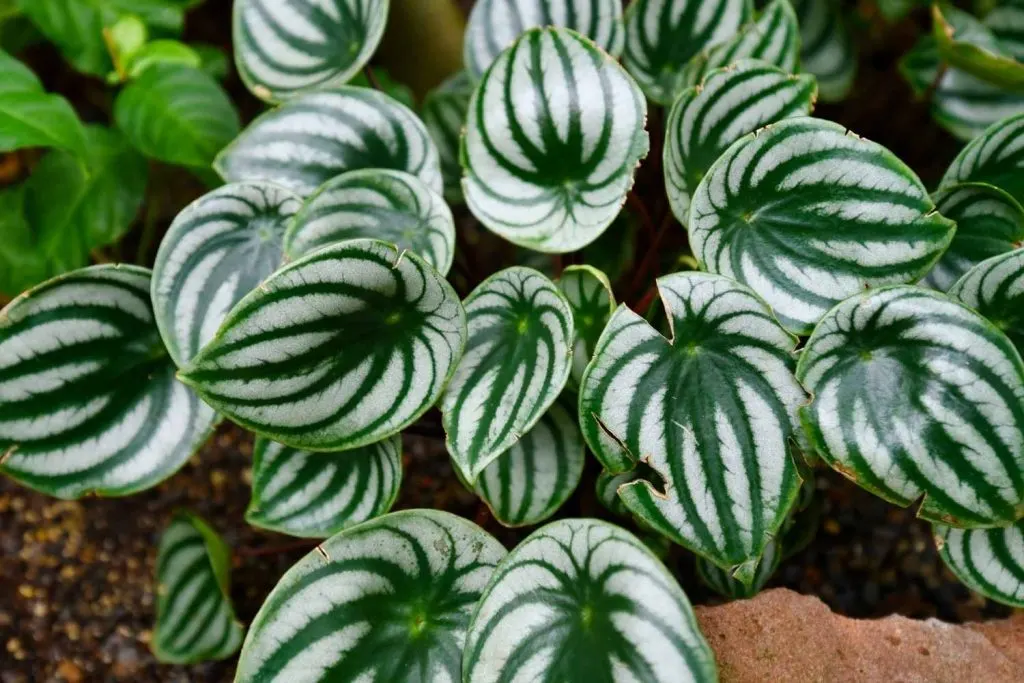
As Houseplants:
These cuties are adorable in hanging baskets. Set one in a small pot flowing down over a shelf. Trim them to any length right up to the edge of the pot.
There are so many types of baby tears and ways to use them in the home.
Baby Tears in Terrariums:
These plants love humidity and grow well in a terrarium. However, They do need good drainage and some air flow.
They can help you learn all about growing baby tears in a terrarium.
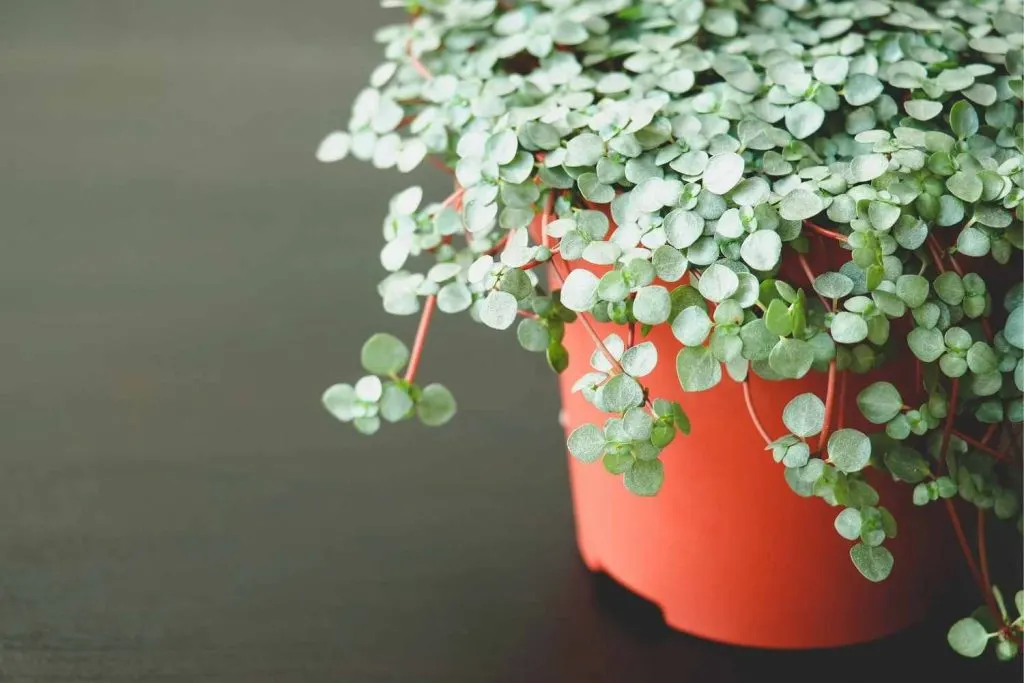
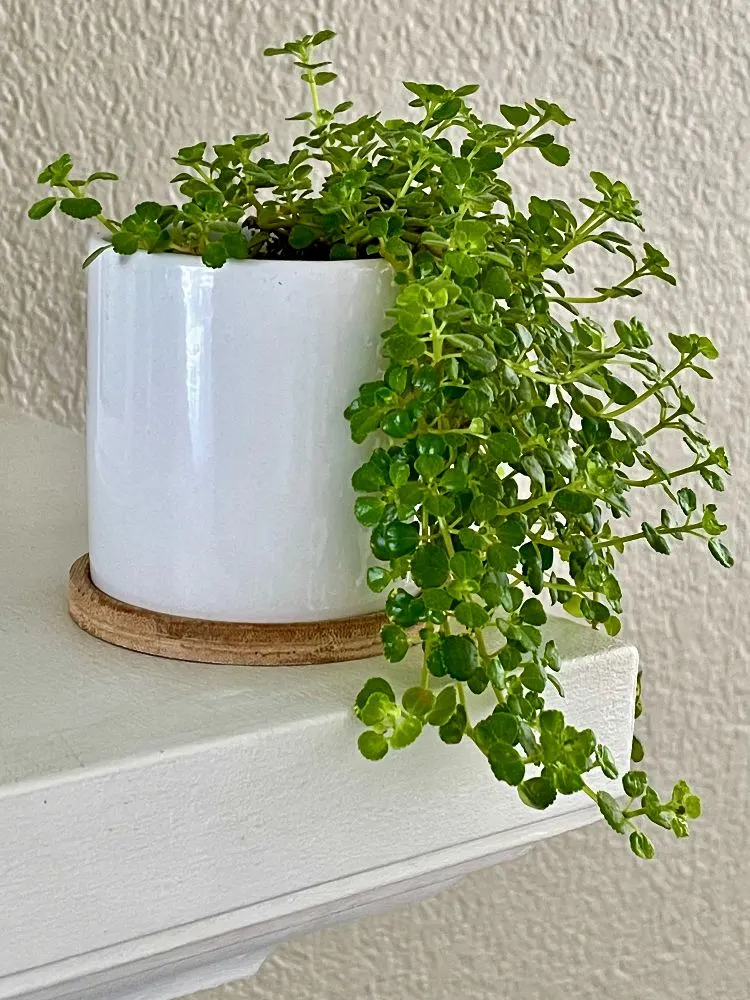
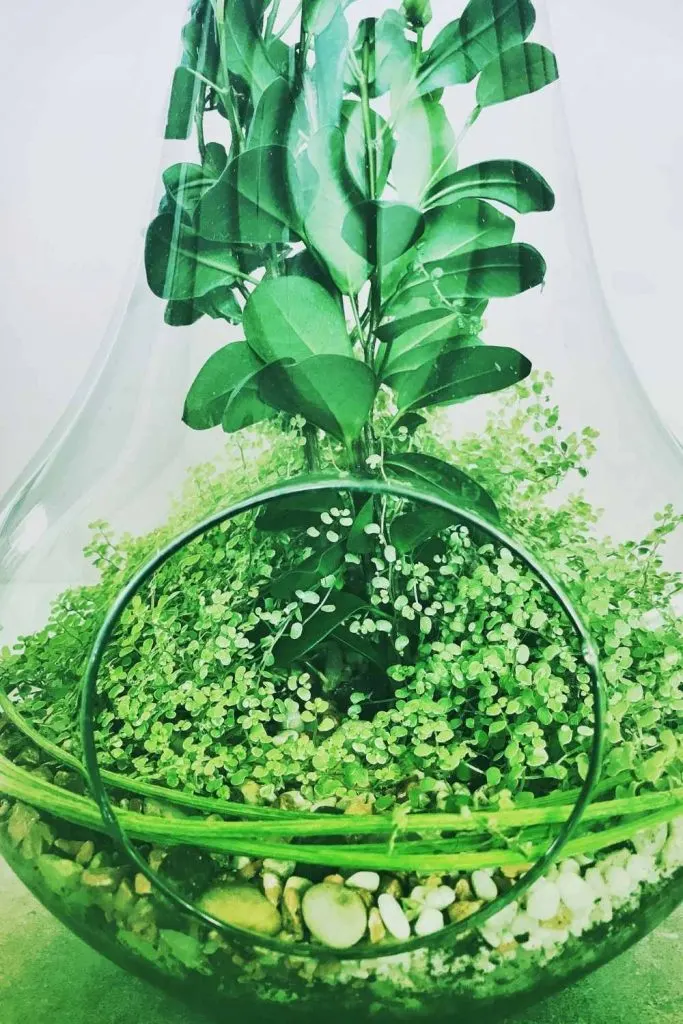
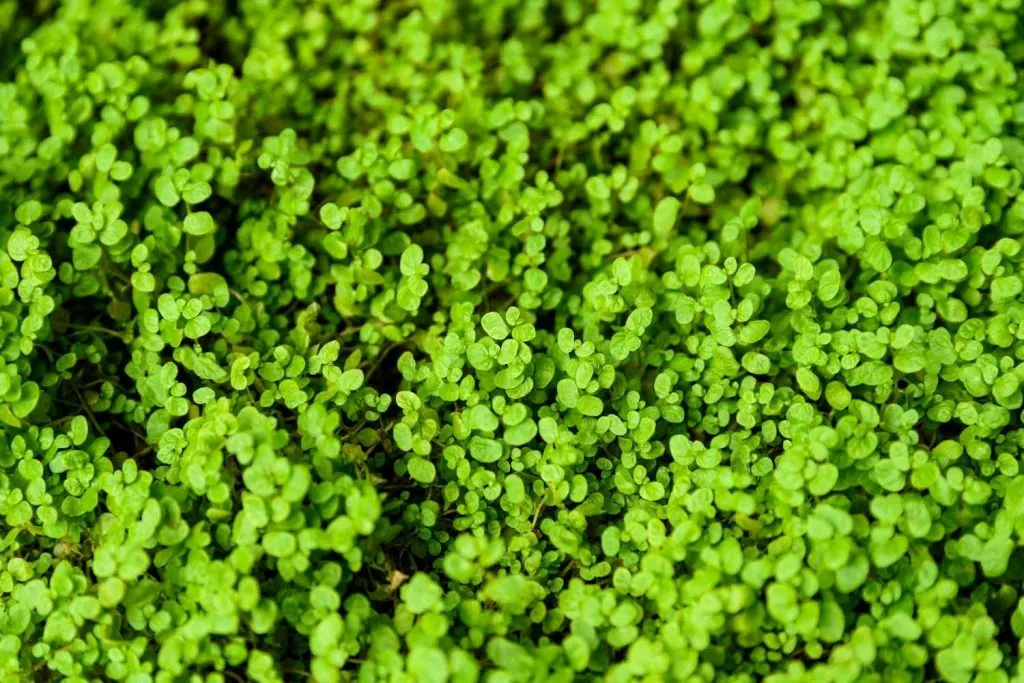
Purchase Baby Tears Plant from Etsy
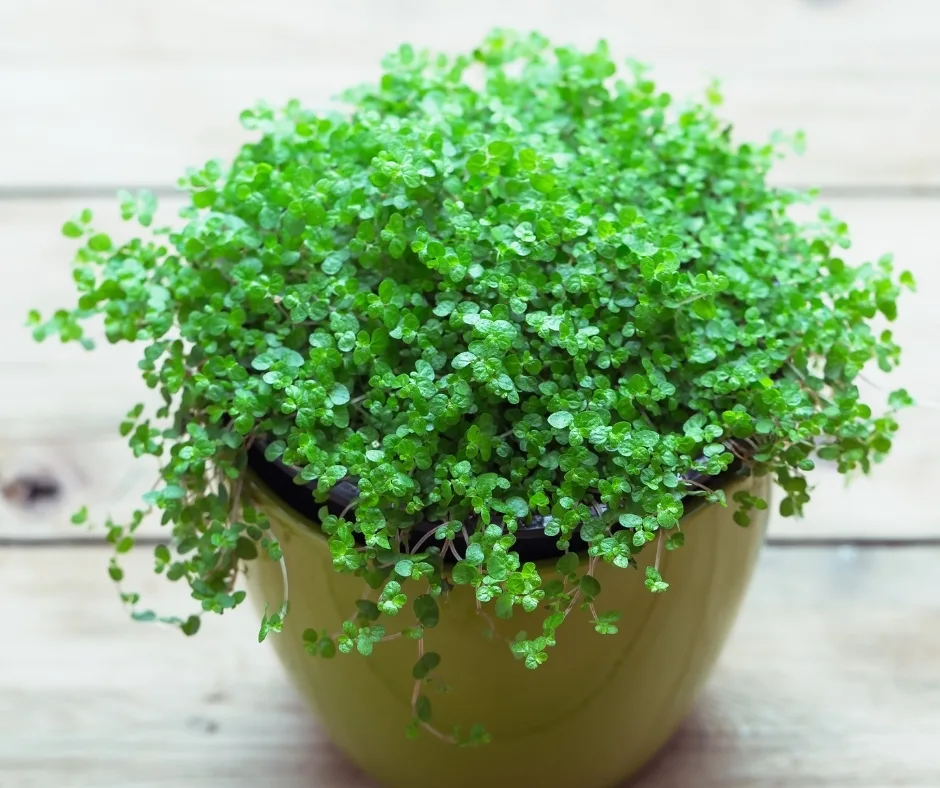
As an outdoor Ornamental Plant:
Baby tears grow easily outdoors in warm humid climates. In fact, it may spread too quickly and become invasive. It’s best to grow this cutie outdoors in controlled conditions.
Planters keep baby tears easy to move indoors if your winter temperatures drop below 50 degrees F.
If you do grow these as an ornamental in a soil bed, baby tears will spread and grow into a fuzzy looking green mat.
To remove it you must dig it out roots and all. Or let it freeze hard and die through the winter.
Are Baby Tears Toxic:
Baby Tears in both the Pileas and Soleirolia soleirolii genus are non toxic. Your cats, dogs and kids are safe with baby tears.
Baby Tears Care Guide
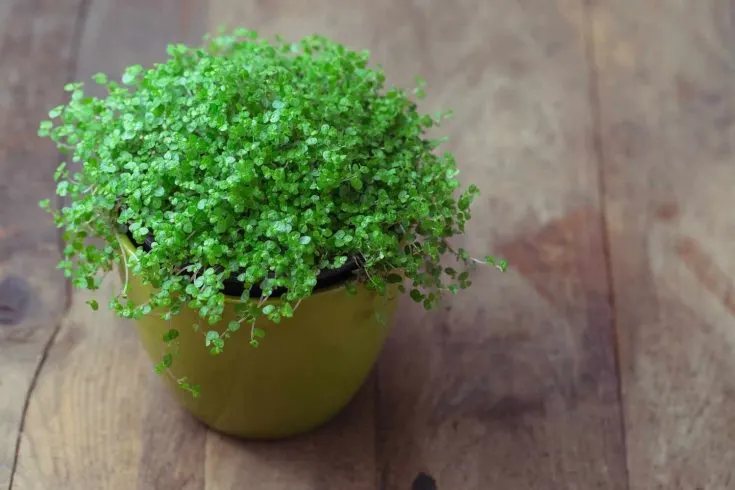
This care guide will describe the best practices for basic care for most common baby tears plants.
Materials
Instructions
Soil Preference:
- Baby tears prefer well draining rich potting mix. The roots will rot quickly if they sit in moist compact soil.
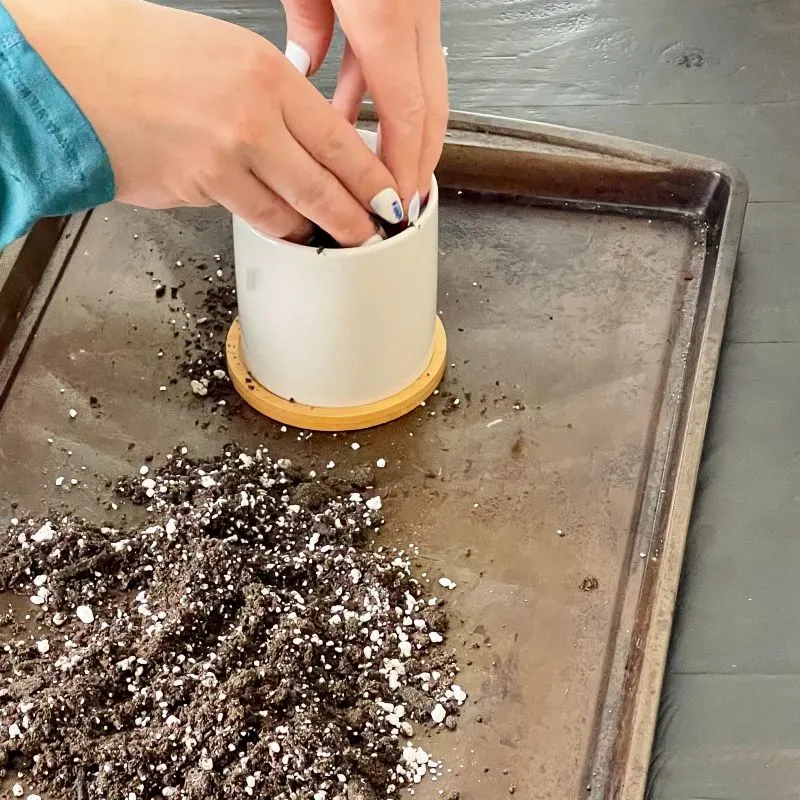
- I've linked our choices for a good soil mix and perlite in the materials above for you. Use 80% soil mix and 20% perlite.
- Mix them together thoroughly to create a lighter soil that drains well and won't compact around the plant roots.
Pot Size and Type:
- Baby tears do best in pots that drain well and fit their roots size. They don't mind being a little root bound. They can grow fast if given a lot of room in the pot.
- The pot must have good drainage.
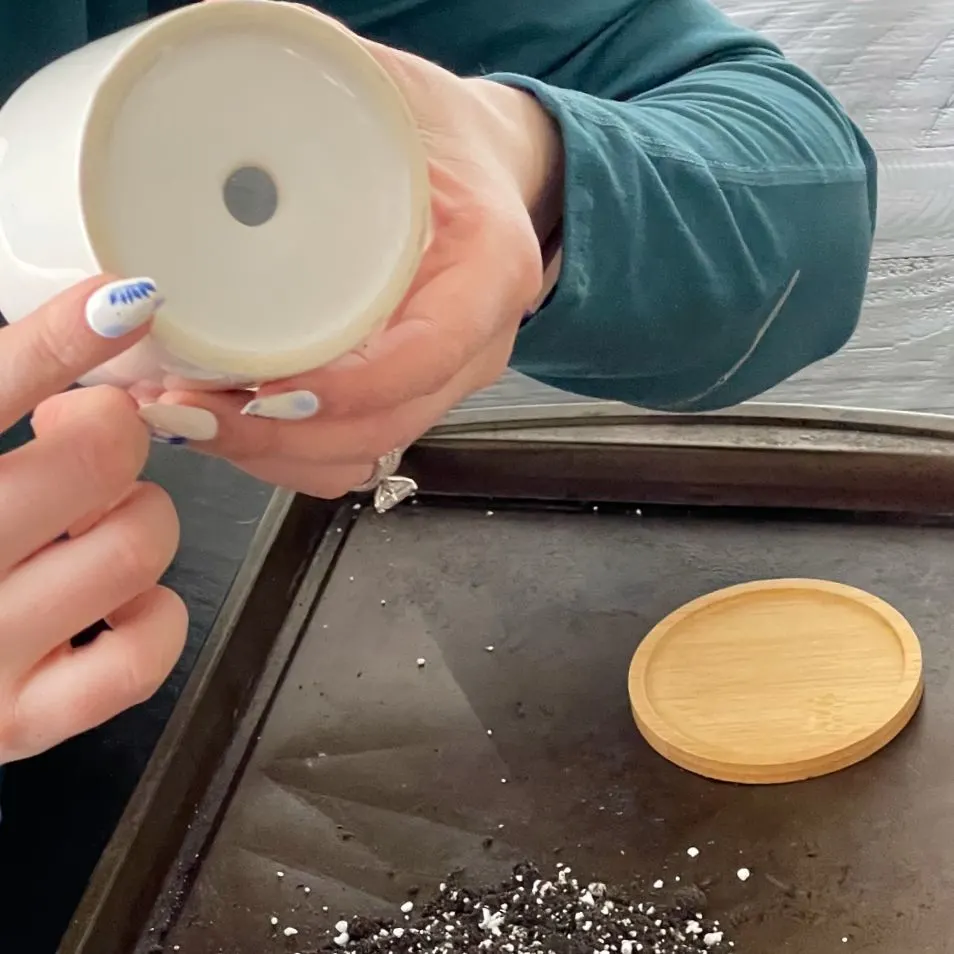
- Repot every year or when roots come out of the pot. Don't jump to a huge pot from a small one. Just go to the next size up pot.
- Baby tears are good candidates for amphibian terrariums. They are fast spreaders and non toxic.
- Baby tears do best when they have some air flow so do not add them to a completely closed terrarium for best results.
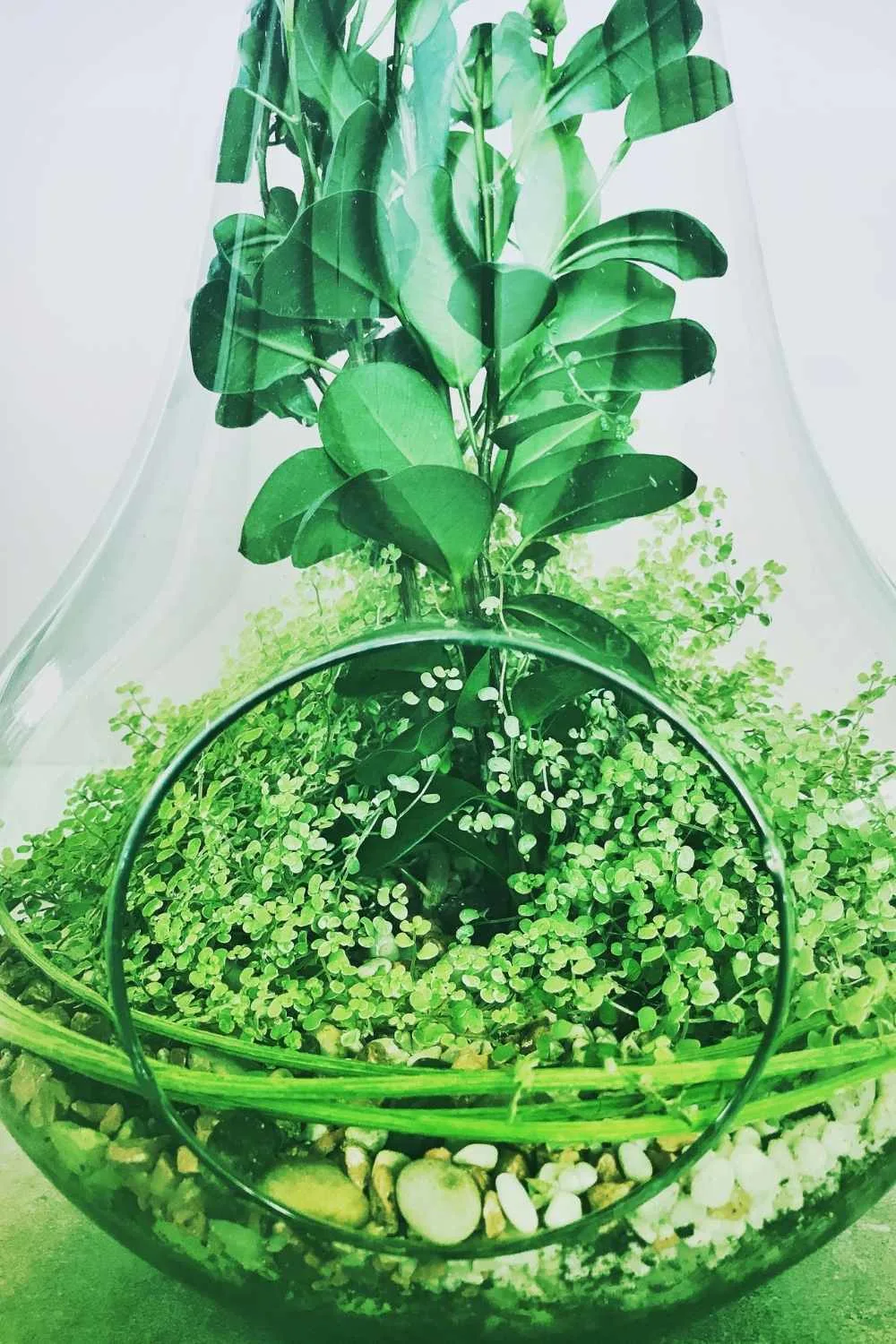 . Give them some air flow.
. Give them some air flow.
Preferred light:
- Baby tears prefer moderate to bright INDIRECT light.
- Keep them out of strong direct hot light or the leaves will shrivel and burn.
- Solid green baby tears will tolerate low light conditions but will also grow more slowly and be somewhat leggy as it reaches for the light.
How to Water a baby tears:
- Baby tears do NOT tolerate over watering. Regular even waterings are best.
- But they do love humidity. They do great in well lit bathrooms and kitchen areas. Or use a pebble tray or mister to provide extra humidity as needed.
- In the growing season with brighter light and warm dry temperatures you may need to water more often as needed.
- Best practice in watering Baby tears is to let the top of the soil dry completely. Now drench the plant till the water comes out the drainage hole. Dump out the water in the drain plate. Allow to dry again. Repeat.
- In dormant winter months reduce watering to when the soil is dry an inch or so down in the pot or when your finger comes out dry..
- Never let this plant get wet feet. Root Rot and Fungus Gnats thrive in heavy wet soils.
Fertilizing Baby Tears:
- Baby tears need a general balanced fertilizer.
- You can fertilize monthly in the growing season.
- Decrease feedings by late Fall and allow your plant to rest through the winter months.
Temperature Range for peperomia:
- Baby tears can grow outdoors at 50 to 70 degrees F. These plants will do fine outdoors in warm humid climates and can become invasive.
- Keep them out of drafts of hot dry air.
Pests:
- Baby tears are susceptible to spider mites. They have so many tiny hiding places for those microscopic bugs. It is easy to miss an infestation until the plant is badly damaged.
- Stress by longterm overwatering, poor light, extreme temperatures and soil conditions are contributors to pest infestations..
- Read our post on How to get rid of aphids and other pests with our homemade pesticide soap recipe or neems oil.
- To minimize the possibility of pests be sure to check all nursery plants before bringing them home.
- Quarantine all new plants until you are sure no pests live in them.
Baby Tears Propagation:
- Baby Tears propagate easily from root division.
- Divide a section off the baby tears at any time with some top growth and roots.
- Plant the rooted division in wet soil.
- baby tears will quickly grow new top growth and establish itself in the new soil.
- They also root wherever their stems can get contact with rich wet soil and grow roots. This is what causes them to spread so successfully.
Non Toxic:
- Baby tears are non toxic to pets and humans.
Notes
Toxicity:
All baby tears are non toxic to humans and pet safe.
If you plant baby tears outdoors in warm humid conditions with part shade it will thrive and may become invasive. Plant pots are recommended outdoors.
Follow Us:
Find us on YouTube, Instagram , Pinterest and TikTok! We love to Plant chat. We also comment, like and occasionally share your content to our daily stories. We’d love to see your plants. Share your joy in your houseplants. Happy Planting!
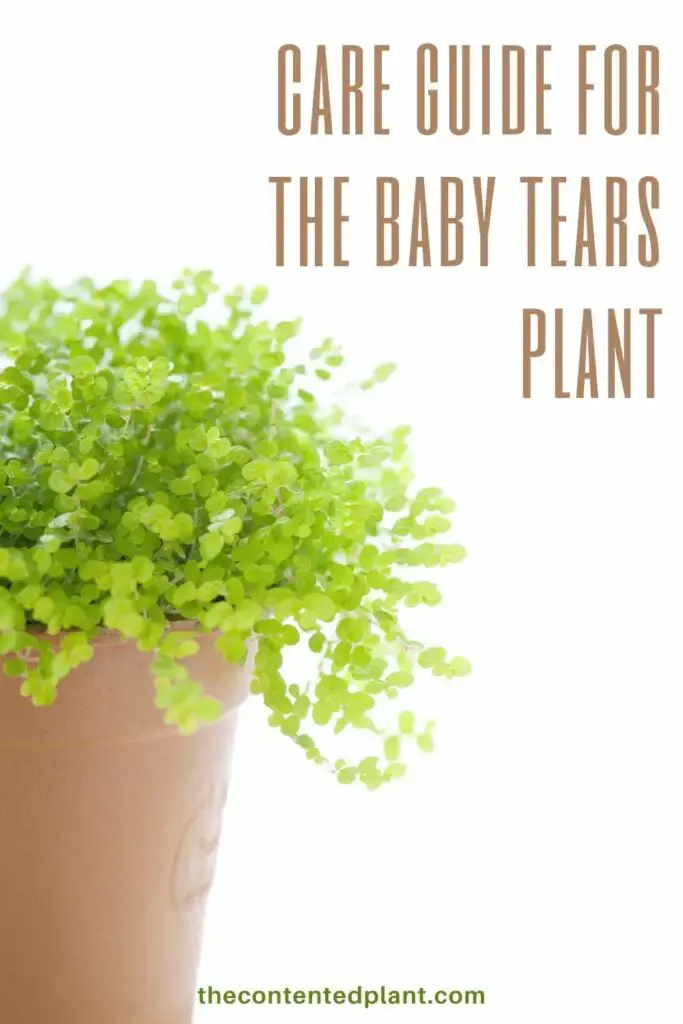

Baby Rubber Plant Profile-Peperomia Obtusifolia - The Contented Plant
Monday 14th of November 2022
[…] Baby Tears Plant Care Guide […]
Anthurium Plant Care Guide - The Contented Plant
Wednesday 18th of May 2022
[…] Baby tears […]
PonyTail Palm Care Guide and Profile: - The Contented Plant
Monday 27th of December 2021
[…] Baby Tears Plant Care Guide […]